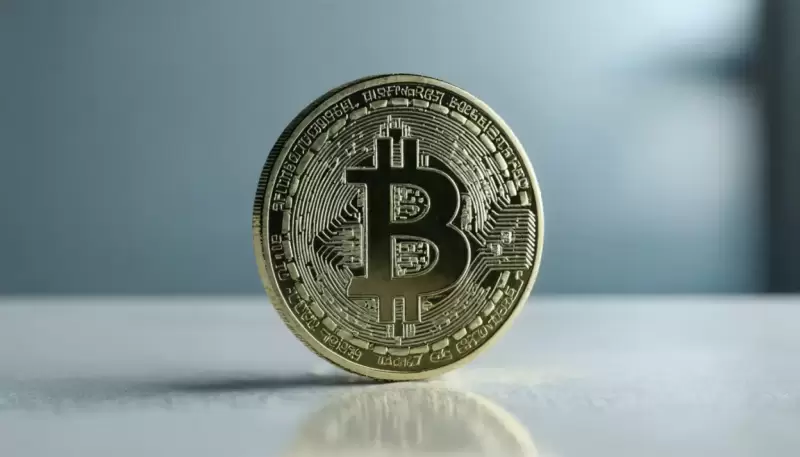 |
|
 |
|
 |
|
 |
|
 |
|
 |
|
 |
|
 |
|
 |
|
 |
|
 |
|
 |
|
 |
|
 |
|
 |
|
Cryptocurrency News Articles
During the 2025 edition of the Paris Blockchain Week, BeInCrypto sat down with Alexis Yellow, CEO of Yellow
Apr 27, 2025 at 07:29 pm
During the 2025 edition of the Paris Blockchain Week, BeInCrypto sat down with Alexis Yellow, CEO of Yellow, a crypto project working on an entirely new paradigm

During the 2025 edition of Paris Blockchain Week, BeInCrypto sat down with Alexis Yellow, CEO of Yellow, a crypto project aiming to build an entirely new paradigm based on Satoshi’s initial vision for Bitcoin.
Alexis is on a mission to create a world without trust, starting with the core principles of blockchain technology. Join us as we delve into the upcoming Yellow Tokens, a novel smart contract mechanism, and making crypto projects more utility-driven.
We begin our interview by asking Alexis to introduce himself and his project.
“My background is in software engineering. Early in my career, I worked at the European Space Center. But my journey in crypto began quite unexpectedly. Back in 2013, an old friend from school, who was working at Goldman Sachs, reached out to tell me about a project that needed help. He said, ‘There are 12 people in Silicon Valley printing fake money.’ That project turned out to be Ripple.
We became Ripple’s first client, and the experience helped me quickly understand the potential of crypto. Despite the skepticism surrounding the space, I saw real innovation. Ripple’s CTO was a Bitcoin Core contributor, and Vitalik Buterin was closely involved with the team even before Ethereum. In fact, Buterin was planning to join Ripple, especially interested in their consensus mechanism, which also served as an inspiration for me.
So, we started in 2013 by doing market-making and tackling challenges in crypto liquidity and infrastructure. One thing that always stuck with me was Satoshi’s idea: ‘We need systems where trust isn’t a prerequisite.’ That thought shaped a lot of my thinking.
Around 2018-2019, I decided to start Yellow. Later, we merged with a French exchange technology company called OpenWare. Combining my market experience with their tech, we launched Yellow Network. It’s a trading infrastructure designed to let institutions, like Société Générale, trade directly with major players like Binance without needing to trust them. ”
Trading with exchanges like Binance without trusting them—does that mean trust as a counterparty?
“Exactly. It’s a core part of Satoshi’s vision. At Yellow, we’re working on a different model of trustlessness using state channels, which represent a new paradigm compared to traditional blockchain systems like Bitcoin or Ethereum.
In those systems, you have tens of thousands of nodes—say, around 30,000—validating each transaction. It’s a powerful model for security; each validator has a financial incentive to be honest, and there’s no way to roll back a confirmed transaction. The same applies to staking networks. But that structure just doesn’t work for high-frequency trading. You can’t have 30,000 nodes verifying every microsecond trade; it’s simply too slow and inefficient.
For instance, some networks try to solve this by reducing the number of validators to 21, which compromises the level of trust and decentralization. Our approach is fundamentally different. The Lightning Network serves as inspiration, but we’ve taken it in a new direction.
With the Lightning Network, you can move money instantly by opening a state channel. At Yellow Network, we use similar state channels, but instead of transferring funds directly, we transfer profit and loss in real time. For example, if you buy a Bitcoin for $100,000 and it rises 5%, the $5,000 profit is immediately transferred to your wallet. The trade is settled instantly, peer-to-peer, with cryptographic proof.
To ensure security and fairness, we’ve built a smart contract called ClearSync. If a counterparty refuses to settle—as we saw recently with the HyperLiquid issue—ClearSync can step in and arbitrate the trade. It verifies the claim and, if valid, ensures the rightful party receives what they’re owed. So, it’s a trustless system that still allows for the speed and flexibility traders need.”
It’s not using flash trading?
“No, it’s peer-to-peer trading. Nothing is faster or more efficient than a direct state channel between two parties. Profit is transferred instantly. That’s the core of this new paradigm: trustless trading, where settlement happens in real time.
Let’s say we’re trading and the connection drops—no problem. If I made a profit, it’s already secured. I might not receive the asset, like Bitcoin, but my profit in dollars is locked in. There’s no need to trust the other party to settle correctly.”
Is it effective profit or a claim to profit?
“It’s effective profit, denominated in dollars or whatever currency is locked as collateral. Here’s how it works: two parties lock in $20,000 to trade Bitcoin. That amount represents the maximum they’re willing to risk.
Disclaimer:info@kdj.com
The information provided is not trading advice. kdj.com does not assume any responsibility for any investments made based on the information provided in this article. Cryptocurrencies are highly volatile and it is highly recommended that you invest with caution after thorough research!
If you believe that the content used on this website infringes your copyright, please contact us immediately (info@kdj.com) and we will delete it promptly.




























































